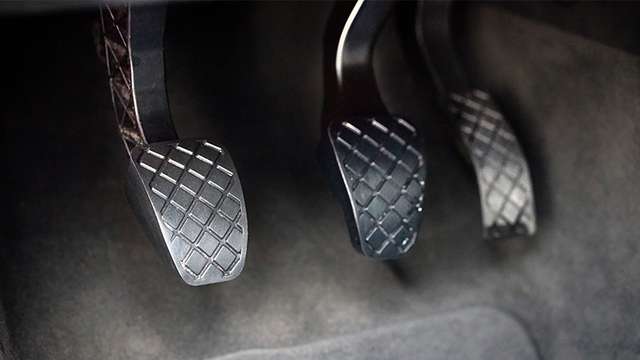- clutch
How do I know if my car has a clutch problem?

Updated 23 Nov 2020
Denis Doherty

While the clutch may seem complicated, they are actually fairly simple, and exist to engage and disengage drive from the engine to the transmission.
Most clutches have three main parts - a flywheel which is connected directly to the engine and spins at the same speed as your motor, a friction disc which connects to your transmission, and a pressure plate which connects the other two parts.
When you push the clutch pedal down, a series of springs and levers push the pressure plate away from the friction disc or clutch plate.
This allows you to change gears without leaving metal bits all over the highway.
What are the symptoms of a bad clutch?
Learning to listen to and feel your car is one of the easiest ways to get an early warning on possible problems.
For clutches, the most direct feedback will come through your pedal. If it’s spongy, sticks or vibrates when you press it, that could be a pointer.
Similarly, if it is making a grumbling sound that could also indicate damage.
Another pointer is smell.
The friction plate is made of a similar material to brake pads and if it is under stress you may smell something resembling burnt toast when you are driving.
This could mean a clutch issue.
Other signs include trouble shifting gears; your engine working hard – revving but your car having poor acceleration; and sudden losses of acceleration when driving, but not changing gears.
How many kms does a clutch last?
Like most car parts there are few hard and fast rules, but consensus seems to be that a clutch should last for between 70,000km and 160,000km.
A lot of that will depend on the type of driving you do and the loads you expect your vehicle to carry.
If you use your car to zip up and down the freeway with few gear changes, it will last longer. If you haul heavy loads in city traffic, not so much.
Can you drive with a broken clutch?
Yes, sort of, but that is, of course, not advisable.
However, should you really need to and the circumstance is desperate, there is a method.
To begin with, make sure you have plenty of space in front of you.
Put the gearstick into first, release both the handbrake and the foot brake and attempt to start the engine.
The vehicle will start to roll forward and it may take a couple of tries until the engine fires and your off in first gear.
Once you are moving, you can even try changing gears, if necessary.
Get the revs up to just above the point where you would push the clutch in to change gears, then back off on the accelerator slightly and push the gearstick into the next shift position.
Do I need to replace the flywheel when replacing the clutch?
The signs of a bad flywheel are very similar to that of a clutch overall - vibrations, smell and difficulty changing gears.
You don't need to replace your flywheel if you are replacing your clutch, but generally, it's a good idea.
Another option is to machine the flywheel so the surface is clean and flat so the clutch disc can operate smoothly and correctly.
Machining or replacing the flywheel shouldn’t add to the overall labour costs as once the clutch is removed the mechanic has clear access to the flywheel.
Is your car experiencing clutch problems? Use AutoGuru to compare quotes from local mechanics, right at your fingertips.

Written By
Denis Doherty
Denis Doherty learned to drive manuals when his dad took him out on flood-ravaged north-west Queensland roads and put him behind the wheel of the company's Toyota Land Cruiser.
Since then, he has loved cars and the freedom they offer.
Despite knowing better, his first car was a Mitsubishi Sigma, but at least it was the GLX which was modified by motoring writer Peter Wherrett.
He currently drives a 1998 Holden Calais but still wishes he was in his Peugeot 206 GTI180.